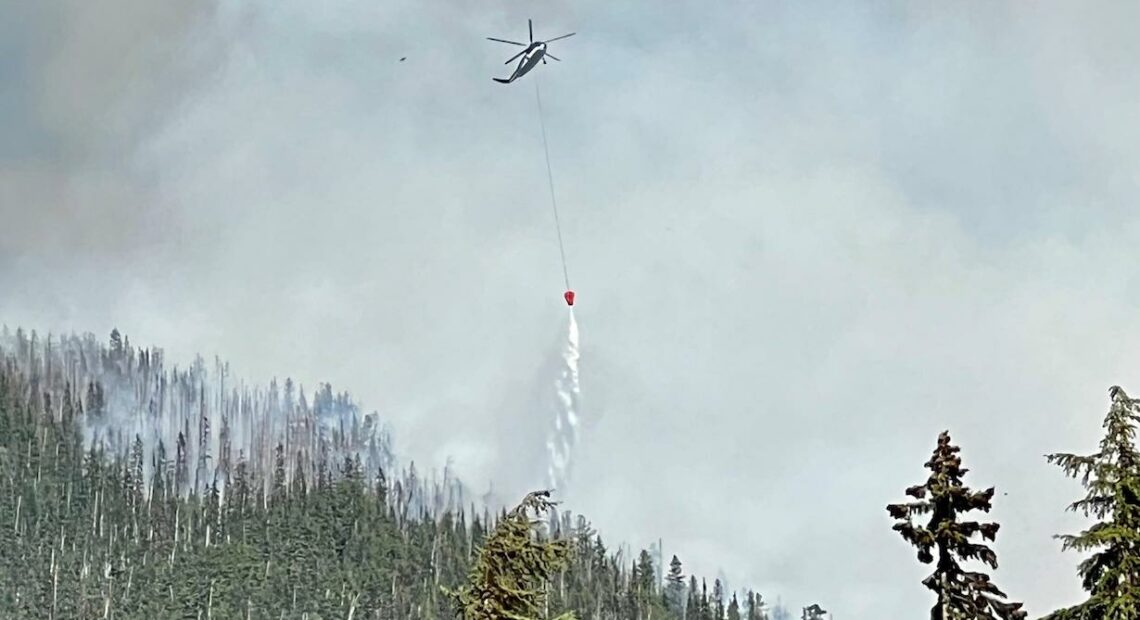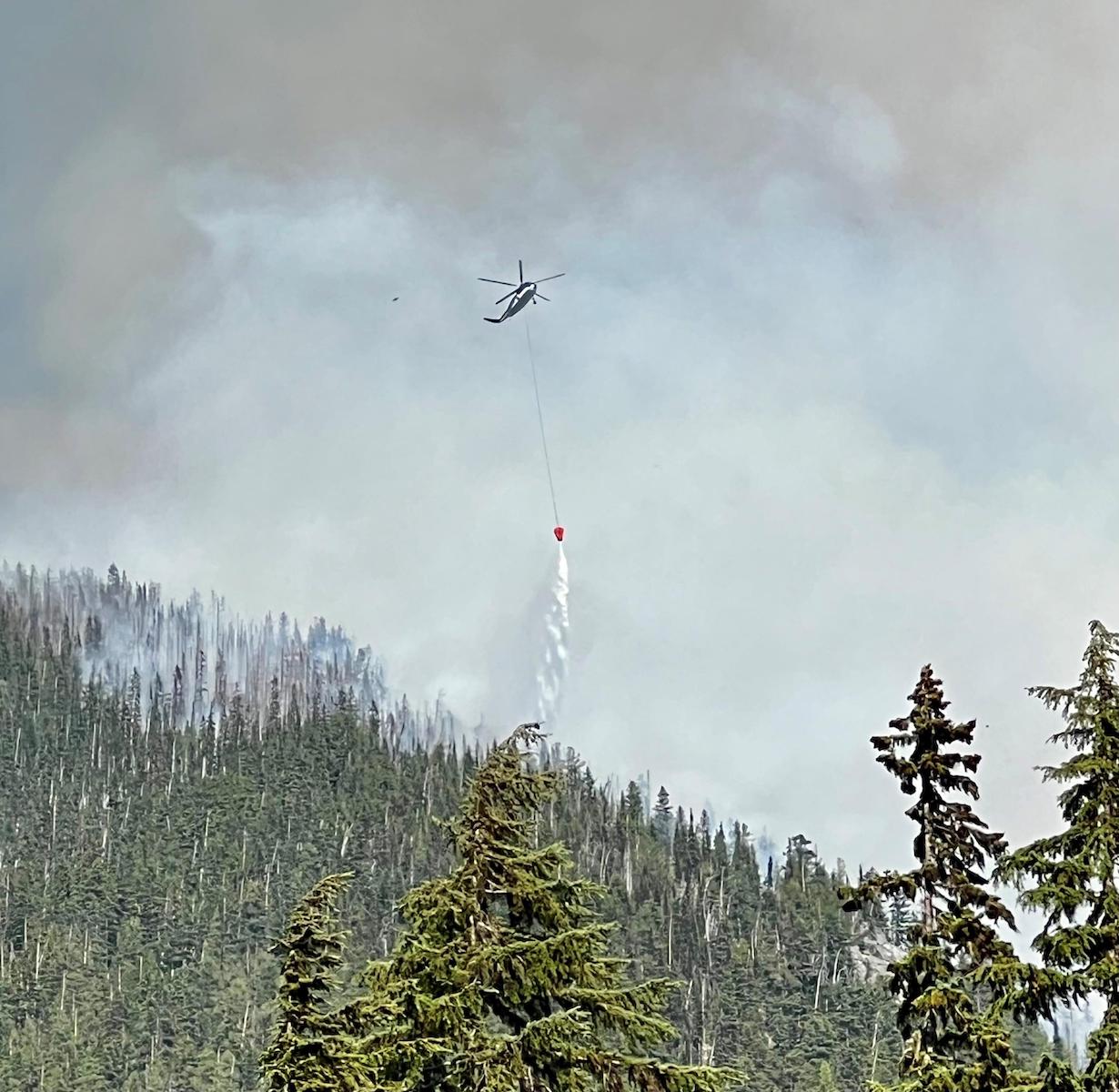
A new WA law aims to get air support on fires more quickly
watch
Listen
(Runtime 1:06)
Read
In the past, if a local fire department needed to use air support from the state, crews had to go through multiple agencies before resources would be deployed. But with legislation that passed unanimously last session, they can now call the resources directly.
The legislation — House Bill 1498 — was called a success by the Washington State Department of Natural Resources. Crews kept most of the state’s fires under 10 acres with initial attack success from air support, according to the department.
North Central Washington frequently has large wildfires. In Wenatchee, Brian Brett is the fire chief of the Wenatchee Valley Fire Department. Every year, Brett said his agency deals with a lot of large wildfires.
About 90% of wildfires will need air support, Brett said, so it’s best to get them on the fire immediately.
“The philosophical change has been, we have credible information of a wildland fire. We know what our fuel types are. The probability of needing air resources is extremely high, (so) launch them right now,” Brett said.
Previously, Brett would go through the Washington State Fire Marshal’s office. He said the process has worked, but it takes multiple steps. This year, local agencies could dispatch state resources directly.
“We made significant strides in the ability to order air assets — that has paid off enormously for the whole state,” Brett said. He thinks his department used the bill at least 20 times this year.
This season, Brett said his department had about a dozen large incidents that they were able to keep from going to state mobilization, because of direct use of aerial support.
But, he said, aerial resources are just one part of the equation for successful wildland firefighting.
“Most people are very familiar with the mixed martial arts fighting in the octagon. Well, the air attack is like the flying Superman throat punch that takes the will of the fire to live away. But that doesn’t end the fight,” Brett said. “The fight is ended by the ground troops doing the grounding pound and submitting the fire through just sheer labor and force.”
The labor force behind that is lacking, Brett said. His department runs 33% understaffed year-round, which is exacerbated during fire season.
It’s not just his agency that is having problems with this — the state’s Department of Natural Resources, Bureau of Land Management and the U.S. Forest Service are all having difficulties recruiting and retaining people.
Next year, the U.S Forest Service won’t be hiring seasonal workers, except for firefighters, who the agency will hire at a lower pay level.
In November 2022, the U.S. Government Accountability Office published a report on barriers to recruiting and retaining federal wildland firefighters, including mental health challenges, poor work-life balance and low pay. The report included mention of how the compensation does not equate to the risk or physical demands of the job.
Wildland firefighting is a tough job, and Brett said the appropriate compensation has lagged behind.
The federal government made provisions in the Infrastructure Investment and Jobs Act calling for agencies to increase firefighter salaries by the lesser of $20,000 or 50%t of base salary, according to the GAO report.
“The Department of Natural Resources is aware that the wildland fire industry is experiencing personnel shortages at the local, state and federal level, and it is an ongoing and multifaceted issue that has impacted DNR as well at times,” Thomas Kyle Milward, a spokesperson with state’s Department of Natural Resources, said in a statement regarding labor shortages. “However, DNR has taken various steps in recent years to address this — including increasing its number of full-time firefighters — and the agency’s fire academy was full this season.”
















